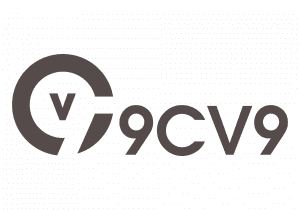Key Takeaways
- The Product Owner role is central to Agile success, combining strategic thinking, technical insight, and stakeholder collaboration.
- Competitive salaries and strong career growth make Product Ownership one of the most in-demand roles across industries.
- Emerging trends like AI, data analytics, and digital transformation are redefining Product Owner responsibilities and future opportunities.
The role of a Product Owner has evolved into one of the most strategic and influential positions within modern organizations operating under Agile and Scrum frameworks. As companies across industries accelerate digital transformation and adopt Agile methodologies, the demand for skilled Product Owners continues to surge globally. These professionals act as the vital bridge between business strategy and product execution—translating customer needs, market demands, and company objectives into actionable development priorities. A career as a Product Owner not only offers significant professional growth opportunities but also provides highly competitive compensation, making it one of the most attractive career paths in today’s technology-driven world.

In the dynamic business landscape, where innovation and adaptability define success, Product Owners play a pivotal role in shaping the direction of product development. They are responsible for ensuring that every product initiative aligns with customer expectations and delivers measurable business value. Beyond managing backlogs and sprint goals, Product Owners act as visionaries, prioritizing the features that will have the most substantial impact on customer satisfaction and revenue growth. Their influence extends beyond product management—they often guide organizational decision-making, stakeholder collaboration, and cross-functional team performance.
The career path of a Product Owner offers diverse and rewarding opportunities. Many professionals begin their journey as Junior or Associate Product Owners, focusing on understanding Agile principles, stakeholder management, and feature prioritization. As they advance, they transition into mid-level and senior Product Owner roles, where they take greater ownership of product strategy, market positioning, and business outcomes. Over time, experienced professionals often progress into high-impact leadership positions such as Lead Product Owner, Director of Product, or even Chief Product Officer (CPO), leading entire product portfolios and defining the long-term innovation strategy for their organizations.
Salaries for Product Owners reflect the high demand and specialized skill set required for the role. Compensation varies significantly depending on factors such as location, experience, industry, and organizational scale. In leading global markets such as the United States, Canada, the United Kingdom, and Singapore, Product Owners command some of the most competitive salaries in the technology and business sectors. Additionally, certified Product Owners with credentials such as Certified Scrum Product Owner (CSPO) or Professional Scrum Product Owner (PSPO) often enjoy higher earning potential and broader career mobility.
Beyond financial rewards, the profession offers intellectual fulfillment and continuous learning. Product Owners work at the intersection of business strategy, customer experience, and technology, which requires them to constantly refine their analytical, leadership, and communication skills. The rise of emerging technologies such as artificial intelligence, data analytics, and automation is also reshaping the scope of the role—introducing new opportunities for specialization, such as Technical Product Owners and Data Product Owners.
As organizations continue to recognize the value of strong product ownership in achieving business agility, the future outlook for this career remains exceptionally promising. Product Owners are increasingly viewed not just as project contributors but as strategic partners in driving innovation, optimizing resource allocation, and maximizing return on investment (ROI). Whether within a startup, a tech giant, or a global enterprise, their ability to balance user needs with business objectives makes them indispensable in delivering sustainable growth.
This complete guide explores everything aspiring and current Product Owners need to know about the career landscape—from day-to-day responsibilities and essential skills to salary insights, career progression, and future trends. Readers will gain a deep understanding of how Product Owners create value, the certifications that enhance their expertise, and how this role continues to shape the future of Agile product development. For professionals seeking a career that combines strategic impact, leadership potential, and lucrative earning prospects, becoming a Product Owner represents one of the most rewarding paths in today’s evolving job market.
Before we venture further into this article, we would like to share who we are and what we do.
About 9cv9
9cv9 is a business tech startup based in Singapore and Asia, with a strong presence all over the world.
With over nine years of startup and business experience, and being highly involved in connecting with thousands of companies and startups, the 9cv9 team has listed some important learning points in this overview of the Product Owner Career and Salaries: A Complete Guide.
If your company needs recruitment and headhunting services to hire top-quality employees, you can use 9cv9 headhunting and recruitment services to hire top talents and candidates. Find out more here, or send over an email to [email protected].
Or just post 1 free job posting here at 9cv9 Hiring Portal in under 10 minutes.
Product Owner Career and Salaries: A Complete Guide
- Defining the Role: Unpacking the Product Owner’s Responsibilities
- Cracking the Interview: Typical Product Owner Interview Questions
- Navigating Your Career Journey: Paths and Progression
- Decoding the Numbers: Salary Benchmarks and Trends for Product Owners
- The Product Owner in Context: Team Dynamics, Budget Oversight, and Impact
- Key Insights and Future Outlook for Product Owners
1. Defining the Role: Unpacking the Product Owner’s Responsibilities
Understanding the Role of a Product Owner
A Product Owner serves as a vital link between business strategy and product execution, ensuring that the development team delivers features that align with organizational objectives and customer expectations. The central mission of a Product Owner is to maximize the value of the product created by the development team. This involves balancing strategic planning with practical execution, requiring a strong grasp of both market dynamics and technical feasibility.
Core Responsibilities and Key Functions
The Product Owner’s role extends beyond simple backlog management; it encompasses strategic decision-making, stakeholder communication, and continuous alignment with business goals.
Key responsibilities include:
- Product Backlog Management:
The Product Owner creates, organizes, and maintains the product backlog, ensuring that each task, user story, and feature is prioritized according to its business value. This process ensures that the development team focuses on delivering the most impactful work first. - Vision and Goal Communication:
A Product Owner is responsible for articulating the product vision and goals clearly to all stakeholders and development team members. This promotes a unified understanding of the product direction and fosters motivation and collaboration across teams. - Stakeholder Collaboration:
Constant engagement with internal and external stakeholders enables the Product Owner to gather requirements, address feedback, and integrate insights that guide the evolution of the product. - Transparency and Alignment:
Maintaining a transparent and accessible product backlog ensures that stakeholders and development teams remain informed about ongoing priorities and progress. - Decision-Making Authority:
Empowered to make critical decisions, the Product Owner must resolve product-related challenges swiftly to maintain development momentum and product quality. - Continuous Learning:
In an environment driven by innovation, Product Owners must remain updated with Agile best practices, emerging tools, and market trends to enhance product performance and value delivery.
Daily Operations and Collaborative Activities
The Product Owner’s day-to-day operations involve diverse and highly collaborative activities.
Typical daily functions include:
- Leading daily Scrum meetings to discuss updates, challenges, and product vision.
- Collaborating closely with business teams, product managers, and customers to ensure alignment between user needs and the organization’s strategic goals.
- Maintaining and refining the product backlog in line with market shifts and feedback.
- Planning upcoming sprints, defining product features in detail, and prioritizing tasks for maximum efficiency.
- Evaluating product value and business impact before approving new features.
- Coordinating release plans, ensuring clear communication of upcoming changes to stakeholders.
- Monitoring market competition and user behavior to inform future development strategies.
- Participating in key Scrum ceremonies such as sprint planning, sprint reviews, and retrospectives to maintain an agile workflow.
Essential Skills and Qualifications
To thrive in this multifaceted role, a Product Owner must demonstrate a blend of technical knowledge, strategic thinking, and interpersonal skills.
Key competencies include:
- Agile and Scrum Expertise: Deep understanding of Agile principles, particularly Scrum methodology, to manage iterative development cycles efficiently.
- Business Acumen: Strong grasp of business value, ROI, and market positioning to guide prioritization and feature development.
- Analytical and Problem-Solving Skills: The ability to analyze data and user feedback to drive informed decisions.
- Communication and Leadership: Exceptional skills to convey complex ideas clearly and lead cross-functional teams effectively.
- Customer Orientation: A customer-first mindset to ensure the product consistently meets evolving user needs.
- Technical Proficiency: Familiarity with tools such as Jira, Asana, Trello, and Confluence for backlog management and collaboration.
- Experience: Typically, three to five years of experience in product development or related roles is preferred.
Comparison: Product Owner vs. Product Manager
Although Product Owners and Product Managers work closely together, their focus areas and scope of influence differ significantly.
| Aspect | Product Owner | Product Manager |
|---|---|---|
| Primary Focus | Execution and delivery within Scrum framework | Strategy, vision, and market positioning |
| Scope of Work | Manages product backlog, sprints, and features | Oversees entire product lifecycle and roadmap |
| Key Objective | Maximizing product value during development | Aligning product with business and customer needs |
| Decision Scope | Tactical and short-term | Strategic and long-term |
| Methodology | Typically Agile/Scrum | Can vary across frameworks |
| Average Salary | Moderate to high, depending on experience | Slightly higher due to broader strategic scope |
Career Outlook and Salary Insights
The demand for skilled Product Owners continues to grow as companies increasingly adopt Agile frameworks to accelerate digital transformation. Salaries vary depending on industry, experience level, and geographical region.
Average Product Owner Salary Range (2025 Estimate)
| Experience Level | Annual Salary (USD) | Description |
|---|---|---|
| Entry-Level | 70,000 – 90,000 | Early-career professionals transitioning from business analysis or project roles |
| Mid-Level | 90,000 – 120,000 | Experienced professionals managing cross-functional Agile teams |
| Senior-Level | 120,000 – 160,000+ | Strategic leaders overseeing large-scale product portfolios and advanced Agile implementations |
Factors Influencing Product Owner Salaries
- Industry Type: Technology, fintech, and SaaS companies tend to offer higher salaries due to complex product ecosystems.
- Company Size: Larger enterprises often provide higher compensation than startups, although startups may offer equity options.
- Certifications: Credentials such as Certified Scrum Product Owner (CSPO) or Professional Scrum Product Owner (PSPO) can enhance earning potential.
- Geographical Location: Salaries in tech hubs such as San Francisco, New York, or London are typically higher than those in smaller markets.
Career Growth and Advancement Opportunities
The Product Owner role serves as a launchpad for various advanced positions in product management and strategic leadership. Career progression typically follows this trajectory:
| Career Stage | Typical Role | Focus Area |
|---|---|---|
| Early Career | Associate Product Owner | Supporting backlog management and documentation |
| Mid Career | Product Owner | Managing sprints, priorities, and stakeholder communication |
| Senior Career | Senior Product Owner / Product Lead | Overseeing multiple teams and aligning product strategy |
| Executive Path | Product Manager / Head of Product | Driving innovation, strategy, and business alignment |
Conclusion
The Product Owner position represents a critical function in modern Agile-driven organizations, balancing business strategy with practical execution. This role requires a unique mix of leadership, analytical ability, and technical insight. As digital transformation accelerates across industries, the demand for Product Owners is expected to rise steadily, making it one of the most promising and lucrative career paths for professionals seeking to blend strategy with product innovation.
2. Cracking the Interview: Typical Product Owner Interview Questions
Understanding the Nature of Product Owner Interviews
The Product Owner interview process is structured to assess a candidate’s ability to combine strategic thinking, technical understanding, and people management skills within an Agile framework. Recruiters and hiring managers aim to evaluate how well a candidate can bridge the gap between business goals and technical execution while maintaining product value, vision, and stakeholder alignment.
Product Owner interviews typically comprise three key dimensions of assessment: behavioral competencies, technical proficiency, and product sense. Each dimension is designed to provide interviewers with a complete picture of the candidate’s readiness for real-world product ownership responsibilities.
Behavioral Question Themes and Evaluation Focus
Behavioral interview questions focus on uncovering a candidate’s decision-making process, leadership qualities, and adaptability through situational examples. These questions typically examine past experiences to predict future performance in complex product environments.
Common areas explored during behavioral assessments include:
- Decision-Making Under Pressure: Candidates may be asked about instances where they had to make difficult trade-offs, such as choosing between competing product features or launch deadlines.
- Conflict Resolution and Stakeholder Management: Interviewers often test negotiation skills and the ability to manage conflicting priorities among stakeholders while maintaining alignment with product goals.
- Adaptability in Dynamic Environments: Questions often explore how a candidate adjusts to shifting requirements or business priorities mid-sprint.
- Collaboration and Team Communication: The ability to collaborate effectively with developers, designers, and executives is a key focus area.
- Data-Driven Thinking: Employers seek examples of how data analytics or metrics influenced past decisions and product improvements.
Examples of Common Behavioral Questions:
- Describe a time you had to make a tough prioritization decision between two critical features.
- How did you handle a disagreement between stakeholders with conflicting objectives?
- Tell me about a time you had to adjust a sprint plan due to unexpected changes. How did you manage it?
- Explain how you ensure clear communication of the product roadmap to diverse stakeholders.
These behavioral insights allow interviewers to evaluate essential soft skills such as leadership, negotiation, adaptability, and communication—traits that define high-performing Product Owners.
Technical and Agile Methodology Interview Questions
Technical interview components measure a candidate’s understanding of Agile and Scrum frameworks, as well as their hands-on experience managing cross-functional development cycles. A deep comprehension of Agile principles, backlog refinement, and sprint execution is critical.
Key technical areas include:
- Scrum Process Expertise: Candidates should demonstrate familiarity with all Scrum ceremonies, including sprint planning, daily stand-ups, retrospectives, and reviews.
- Product Backlog Management: Understanding how to create, maintain, and prioritize backlogs using methods such as MoSCoW or WSJF.
- User Story Frameworks: Knowledge of the INVEST model (Independent, Negotiable, Valuable, Estimable, Small, Testable) for crafting effective user stories.
- Definition of Done and Acceptance Criteria: Candidates must explain how they ensure quality and alignment with business requirements.
- Role Differentiation: A clear distinction between the responsibilities of a Product Owner, Scrum Master, and Product Manager is often tested.
- Handling Changing Requirements: Demonstrating flexibility and responsiveness in Agile projects is key to success.
Sample Technical Questions:
- How do you prioritize backlog items when faced with competing demands?
- Explain the importance of the Definition of Done in Scrum.
- How do you manage changing requirements during a sprint?
- What metrics do you use to evaluate sprint success?
Product Sense and Strategic Thinking Evaluation
Product sense questions assess a candidate’s ability to balance customer needs with business objectives. Interviewers aim to understand how the candidate thinks about product strategy, innovation, and market positioning.
Key evaluation areas include:
- User-Centric Thinking: Ability to empathize with end-users and translate their needs into actionable features.
- Business Value Prioritization: Skill in evaluating which features deliver the highest return on investment.
- Creative Problem-Solving: Assessing the ability to innovate under constraints.
- Roadmapping and Vision Setting: Understanding how to create a realistic and strategic product roadmap that aligns with long-term goals.
Common Product Sense Questions:
- What’s your favorite digital product, and how would you improve it?
- How would you prioritize product features when faced with limited time or resources?
- How would you design a product for a new user segment?
- Explain your process for creating a product roadmap and setting priorities.
These questions aim to uncover analytical depth, strategic foresight, and creativity—attributes that enable a Product Owner to deliver products that align with both user satisfaction and business success.
Core Skills and Attributes Evaluated During Product Owner Interviews
Employers look for a specific blend of technical and interpersonal qualities that define successful Product Owners. These attributes are evaluated holistically throughout the interview process.
| Skill Category | Key Attributes Evaluated | Importance to Role |
|---|---|---|
| Communication & Collaboration | Clear articulation of ideas, active listening, cross-functional alignment | Essential for stakeholder engagement and team coordination |
| Analytical & Strategic Thinking | Data-driven decision-making, problem-solving, prioritization | Crucial for guiding product direction |
| Leadership & Motivation | Ability to inspire and drive Agile teams | Important for fostering team accountability |
| Technical Understanding | Knowledge of Agile/Scrum tools (Jira, Trello, Confluence) and product metrics | Key for efficient backlog management |
| Customer Empathy | Deep understanding of user pain points and feedback analysis | Ensures customer-focused development |
| Adaptability & Resilience | Flexibility under shifting priorities | Necessary in fast-paced product cycles |
| Negotiation & Stakeholder Management | Balancing business goals and user needs | Critical for achieving consensus and buy-in |
Interview Performance Metrics Matrix
| Evaluation Dimension | Description | Weightage (%) |
|---|---|---|
| Behavioral Competencies | Leadership, teamwork, adaptability | 30% |
| Technical Knowledge | Agile methodologies, backlog management, Scrum practices | 25% |
| Product Sense | Strategic thinking, user empathy, innovation | 25% |
| Communication & Clarity | Stakeholder engagement, presentation skills | 10% |
| Cultural Fit & Mindset | Alignment with company values and Agile philosophy | 10% |
Final Thoughts on Succeeding in Product Owner Interviews
Cracking a Product Owner interview requires more than just theoretical knowledge—it demands practical application, situational awareness, and strong interpersonal intelligence. Candidates must demonstrate their ability to lead Agile teams, manage complex stakeholder relationships, and maintain a balance between innovation, feasibility, and business outcomes.
The most successful Product Owners stand out not only for their technical understanding but also for their ability to influence, prioritize effectively, and drive collaboration across teams. As organizations increasingly rely on Agile-driven product development, mastering these competencies positions candidates for sustained career growth and highly competitive compensation in this evolving field.
3. Navigating Your Career Journey: Paths and Progression
Understanding the Product Owner Career Journey
A career as a Product Owner is both dynamic and strategic, offering professionals a clear progression path that evolves with experience, technical expertise, and business acumen. Each stage in this journey introduces new challenges, broader responsibilities, and a greater influence on organizational success. The role serves as a cornerstone within Agile and Scrum environments, combining product strategy with delivery execution and stakeholder management.
The journey often begins at the foundational level, where professionals learn the intricacies of Agile product management. As they gain experience, they evolve into strategic leaders capable of shaping a company’s product vision and long-term innovation roadmap.
Career Progression Framework for Product Owners
The Product Owner career path typically unfolds through multiple professional stages, as illustrated below:
| Career Stage | Title | Core Focus | Typical Responsibilities | Experience Level |
|---|---|---|---|---|
| Entry-Level | Junior/Associate Product Owner | Learning Agile principles and assisting senior POs | Supporting backlog maintenance, documenting user stories, handling minor features | 0–2 years |
| Mid-Level | Product Owner | Managing product execution and stakeholder communication | Leading backlog prioritization, sprint planning, and roadmap execution | 2–5 years |
| Senior-Level | Senior Product Owner | Strategic oversight of complex product areas | Leading major releases, mentoring junior POs, managing cross-functional teams | 5–8 years |
| Leadership | Lead or Principal Product Owner | Organizational influence and innovation leadership | Coordinating multiple product teams, aligning strategy with business goals | 8–12 years |
| Executive | Head of Product / Director / Chief Product Officer | Enterprise-level product strategy and leadership | Defining product vision, managing portfolios, guiding executive-level initiatives | 12+ years |
This matrix demonstrates how the Product Owner role transitions from an execution-driven position to one deeply rooted in strategic and organizational leadership.
Key Career Responsibilities at Each Stage
- Junior or Associate Product Owner:
At the entry level, professionals focus on mastering Agile workflows and understanding how development teams operate. They contribute to gathering requirements, writing user stories, and learning prioritization frameworks under the supervision of senior team members. - Product Owner:
At this stage, the role shifts toward autonomy and responsibility. Individuals manage product backlogs independently, translate strategic visions into actionable deliverables, and collaborate closely with development teams. They play a vital role in stakeholder communication, ensuring business objectives align with development priorities. - Senior Product Owner:
Senior Product Owners act as mentors and strategic drivers. They lead large-scale initiatives, manage complex stakeholder relationships, and influence cross-functional decision-making. Their focus extends beyond sprint management to shaping long-term product strategies. - Lead or Principal Product Owner:
Professionals at this level oversee multiple product teams or portfolios. They contribute to enterprise innovation, ensuring products are aligned with broader business goals and market trends. Leadership, cross-departmental coordination, and high-level planning define their daily responsibilities. - Director or Chief Product Officer (CPO):
This is the pinnacle of the Product Owner career. Executives at this level oversee the entire product organization, manage large teams, and guide the company’s product vision. They integrate product strategy with business performance metrics, drive innovation, and ensure the company maintains a competitive edge in its market.
Career Path Diversification and Related Opportunities
One of the most appealing aspects of a Product Owner career is its flexibility. The skills gained through backlog management, stakeholder coordination, and product delivery are transferable across several disciplines. Professionals often branch into related fields based on their interests and long-term aspirations.
| Career Transition | Related Role | Description | Ideal Skill Alignment |
|---|---|---|---|
| Process Facilitation | Scrum Master | Focuses on facilitating Agile ceremonies and improving team efficiency | Strong understanding of Scrum principles |
| Strategic Coaching | Agile Coach | Guides teams and organizations in Agile adoption | Expertise in Agile transformation |
| Product Strategy | Product Manager | Oversees market research, long-term planning, and business outcomes | Market insight, strategic thinking |
| Analysis and Research | Business Analyst | Concentrates on requirements analysis and process improvement | Analytical and documentation skills |
| Project Coordination | Project Manager | Manages timelines, deliverables, and cross-team collaboration | Organizational and planning capabilities |
| User Experience | UX Strategist | Designs solutions that enhance user interaction and satisfaction | User empathy, design collaboration |
| Technical Management | Technical Product Manager | Manages highly technical products requiring engineering alignment | Technical proficiency and communication |
| Entrepreneurship | Startup Founder | Builds and manages product-focused startups | Strategic, leadership, and risk-taking mindset |
This diversification allows Product Owners to pursue roles that align with their strengths—whether in process optimization, customer experience, or technology leadership.
Importance of Certifications and Continuous Learning
In an ever-evolving technology and product landscape, continuous learning is indispensable. Industry-recognized certifications enhance credibility and expand career opportunities by validating expertise in Agile methodologies and product management.
Notable Certifications for Product Owners
| Certification | Issuing Organization | Purpose | Benefit |
|---|---|---|---|
| Certified Scrum Product Owner (CSPO) | Scrum Alliance | Mastery of Scrum principles and product ownership | Industry-recognized Agile expertise |
| Professional Scrum Product Owner (PSPO) | Scrum.org | Advanced understanding of Scrum product delivery | Enhances practical Agile application |
| Agile Certified Product Manager & Product Owner (ACP-PO) | AIPMM | Combines Agile product management and ownership | Broadens strategic product skills |
| SAFe Product Owner/Product Manager (POPM) | Scaled Agile | Focused on large-scale Agile enterprise management | Ideal for enterprise-level PO roles |
Beyond formal certification, staying updated on technological advancements, AI integration, and market trends allows Product Owners to adapt to modern demands. Active engagement in product management communities, conferences, and professional networks also provides mentorship, best practice insights, and access to emerging career opportunities.
Skill Evolution and Competency Matrix
| Competency Category | Early Career Focus | Advanced Career Focus |
|---|---|---|
| Agile Knowledge | Learning Scrum fundamentals | Scaling Agile frameworks across teams |
| Product Strategy | Translating user stories into value | Shaping product portfolios and market strategy |
| Stakeholder Management | Communicating updates | Influencing cross-functional leadership |
| Analytical Skills | Evaluating sprint metrics | Driving data-informed strategic decisions |
| Leadership | Supporting teams | Inspiring innovation and managing organizational change |
Conclusion: Building a Sustainable and Rewarding Product Owner Career
The Product Owner career path offers a balance between technical execution, strategic vision, and leadership development. Professionals who excel in this role combine analytical reasoning with strong interpersonal communication and adaptability to drive innovation and business growth.
As organizations worldwide embrace Agile and digital transformation, the demand for skilled Product Owners continues to surge. Those who invest in certifications, continuous learning, and cross-functional leadership development are best positioned to ascend to senior roles such as Director of Product or Chief Product Officer—where they can shape the future of enterprise innovation and product excellence.
4. Decoding the Numbers: Salary Benchmarks and Trends for Product Owners
Understanding the Global Salary Landscape for Product Owners
The compensation structure for Product Owners reflects the growing strategic importance of this role in Agile-driven organizations. Across global markets, salaries vary considerably depending on factors such as experience, geographic location, industry sector, and company size. The position of a Product Owner continues to rank among the most competitive in modern product development, with remuneration packages aligning with both technical expertise and leadership impact.
In the United States, Product Owners earn between approximately $98,500 and $137,000 per year, with average figures reported across various sources: $107,569 (Built In), $112,891 (ZipRecruiter), $118,713 (Salary.com), and $115,784 (Glassdoor). These variations often stem from differences in sampling size, industry sectors, and reporting methodologies.
In the United Kingdom, Product Owners typically earn between £55,700 and £69,300 annually, with compensation influenced by region and experience—higher salaries are often found in London and other major financial or technology hubs.
The salary landscape in India demonstrates wide disparities, reflecting differences between domestic and multinational organizations. Average salaries range from ₹6,00,000 to ₹25,00,000, with top-tier technology firms and U.S.-based subsidiaries offering between ₹20,00,000 and ₹35,00,000 per year for experienced professionals.
In Canada, Product Owners earn an average between CA$97,000 and CA$104,000 annually, while in Australia, earnings vary more widely, from AUD 80,000 to AUD 192,000, with senior Product Owners and specialists commanding salaries at the higher end of this scale.
Product Owner Salary Comparison by Country (2025)
| Country | Average Annual Salary | Salary Range | Notes |
|---|---|---|---|
| United States | $98,505 – $137,000 | Varies by region and industry | Highly competitive in tech-driven sectors |
| United Kingdom | £55,724 – £69,271 | London and major cities offer premium rates | Demand highest in fintech and SaaS |
| India | ₹6,00,000 – ₹25,00,000+ | MNCs pay significantly higher | Strong growth in tech and SaaS |
| Canada | CA$97,657 – CA$104,385 | Consistent across provinces | Higher in Toronto and Vancouver |
| Australia | AUD 80,000 – AUD 192,503 | Significant variance across levels | Senior roles see top-tier earnings |
Experience-Based Salary Progression
Experience remains the most decisive factor in determining Product Owner compensation. As professionals progress through their careers, their earning potential increases substantially due to accumulated expertise, leadership capacity, and their ability to influence strategic decision-making.
| Experience Level | Average Salary (USD) | Typical Range | Description |
|---|---|---|---|
| Entry-Level (0–1 year) | $80,000 | $67,985 – $92,800 | Foundational roles focused on Agile principles and backlog management |
| Early Career (1–4 years) | $101,000 | $77,656 – $119,000 | Managing small-scale products, gaining stakeholder exposure |
| Mid-Career (5–9 years) | $114,000 | $92,619 – $136,690 | Leading larger projects, handling complex prioritization |
| Senior-Level (7+ years) | $140,000 | $105,021 – $175,000 | Driving product strategy, mentoring teams, leading cross-functional collaboration |
This progression showcases the direct correlation between expertise and earning potential, as senior professionals transition from operational roles to strategic leadership positions.
Regional Salary Differentiation in the United States
The geographic factor plays a major role in salary differentiation within the U.S., especially across cities with varying living costs and concentrations of technology companies.
| City | Average Salary | Salary Range | Notes |
|---|---|---|---|
| San Francisco, CA | $141,800 | $133,005 – $148,609 | Highest average due to tech concentration |
| New York City, NY | $127,000 | $120,709 – $133,810 | Competitive pay reflecting financial sector demand |
| Seattle, WA | $129,400 | $114,412 – $144,344 | Driven by major tech corporations |
| Los Angeles, CA | $129,600 | $117,886 – $141,319 | Steady growth in digital and media industries |
| Boston, MA | $110,700 | $106,552 – $114,823 | Strong academic and biotech influence |
| Chicago, IL | $123,600 | $114,084 – $130,444 | Balanced cost-to-salary ratio |
| Denver, CO | $96,800 | $93,385 – $100,271 | Moderate growth in midwestern tech firms |
| Atlanta, GA | $116,873 | N/A | Emerging technology hub |
| Ohio (Average) | $107,325 | $88,900 – $123,100 | Stable demand across industries |
Industry-Based Salary Variations
The sector in which a Product Owner operates significantly impacts earning potential. Industries prioritizing digital innovation, customer experience, and data-driven product strategies generally offer higher compensation.
| Industry | Average Salary (USD) | Salary Notes |
|---|---|---|
| Healthcare | $153,000 | Reflects rising demand for digital health platforms |
| Finance | $118,000 | Strong focus on fintech and compliance products |
| Technology (Software & IT) | $116,000+ | Consistent demand for Agile professionals |
| Manufacturing | $108,319 | Increasing adoption of Industry 4.0 technologies |
| E-commerce | $120,000+ | Driven by digital transformation and global logistics |
Healthcare and technology sectors currently lead in offering premium compensation due to their continuous digital evolution and reliance on product-led innovation.
Influencing Factors on Product Owner Compensation
Several critical variables determine a Product Owner’s salary trajectory:
- Experience and Seniority: The depth of Agile expertise, strategic leadership, and delivery outcomes directly influence compensation levels.
- Geographic Region: Salaries are higher in metropolitan areas with strong technology ecosystems and high costs of living.
- Company Size and Structure: Startups may offer equity and flexible pay structures, while large corporations provide structured salary bands and performance bonuses.
- Certifications: Professional credentials such as CSPO, PSPO, or SAFe POPM can boost earning potential by 10–20%.
- Industry Sector: Sectors with strong digital adoption—technology, finance, healthcare—offer the most lucrative compensation.
- Remote Work: The global rise in remote collaboration allows professionals in lower-cost regions to earn competitive global rates.
Emerging Salary Trends and Market Outlook
The future of Product Owner salaries points toward sustained growth, driven by expanding Agile adoption and the increasing recognition of product ownership as a core strategic function. As companies continue to embrace digital transformation, Product Owners are expected to play an even greater role in bridging business strategy with user-centric innovation.
Key factors shaping future salary dynamics include:
- Integration of Artificial Intelligence and Automation: Product Owners skilled in AI-driven product management will command higher salaries.
- Expansion of Remote and Hybrid Work Models: Companies now access global talent, influencing regional salary alignment.
- Growing Emphasis on Data-Driven Product Strategy: Analytical literacy and metrics-based decision-making will become higher-paying competencies.
- Continuous Learning and Certification Uptake: As the profession matures, advanced certifications will increasingly differentiate top-tier professionals.
Conclusion: The Financial Promise of a Product Owner Career
The Product Owner role continues to offer one of the most lucrative and future-proof career trajectories in the technology and business sectors. With salaries increasing in alignment with Agile maturity, leadership capability, and market specialization, Product Owners are positioned as central drivers of organizational innovation.
As global demand intensifies across industries—from fintech to healthcare and AI-driven enterprises—professionals equipped with strong Agile acumen, business insight, and cross-functional leadership will find abundant opportunities for both financial and career growth in the evolving digital economy.
5. The Product Owner in Context: Team Dynamics, Budget Oversight, and Impact
The Product Owner as a Central Pillar in Agile Teams
In modern Agile and Scrum environments, the Product Owner serves as a cornerstone of product development and organizational success. Functioning within a cross-functional Scrum team—usually composed of a Scrum Master and Developers—the Product Owner acts as the central liaison between business objectives and technical execution. The team generally consists of five to nine professionals, a size designed to facilitate efficient communication, adaptability, and decision-making.
The Product Owner’s primary mission is to maximize the product’s overall value. This involves transforming customer insights, stakeholder requirements, and market trends into actionable product goals. The Product Owner continuously refines and prioritizes the product backlog, ensuring that every development effort contributes directly to the organization’s strategic outcomes. While collaboration is key, final decision-making authority rests with the Product Owner, who ultimately determines what features will bring the highest return on investment (ROI) and market differentiation.
Through consistent interaction with stakeholders, developers, and customers, the Product Owner bridges communication gaps, ensuring that technical teams are aligned with the product’s long-term vision. This role demands a balance between business strategy, customer empathy, and technical comprehension—traits that define successful Product Ownership in competitive markets.
Financial Accountability and Budget Oversight in Product Ownership
The Product Owner’s responsibilities extend beyond backlog management to encompass financial stewardship and strategic investment decisions. While not always directly responsible for the product’s operational budget, Product Owners are expected to optimize ROI through informed prioritization and resource allocation. Their influence lies in deciding which initiatives warrant funding, balancing innovation with fiscal responsibility.
In many organizations, Product Owners collaborate with senior executives, project sponsors, and finance departments to ensure that budget allocations align with business goals. However, their level of control often depends on organizational maturity and structure. In more Agile-driven companies, Product Owners exercise a greater degree of budgetary autonomy, directly influencing cost efficiency and profitability outcomes.
A recent survey underscores the challenges organizations face in identifying professionals with this dual expertise: 66% of companies report difficulties in hiring Product Owners who possess both strategic vision and financial acumen. This finding highlights a growing industry expectation for Product Owners to demonstrate analytical thinking, market understanding, and budget management skills in addition to Agile proficiency.
Matrix: Product Owner Involvement in Financial Decision-Making
| Level of Seniority | Budget Control | Key Responsibilities | Strategic Focus |
|---|---|---|---|
| Associate Product Owner | Limited | Supports backlog prioritization | Operational efficiency |
| Product Owner | Moderate | Influences product investment and feature ROI | Balancing value vs. cost |
| Senior Product Owner | High | Directs cross-departmental budget usage | Product profitability and growth |
| Lead/Principal Product Owner | Extensive | Oversees portfolio budgets | Long-term ROI and business scaling |
The Quantifiable Impact of Effective Product Ownership
An accomplished Product Owner delivers measurable improvements across performance, productivity, and profitability. Their leadership not only enhances product alignment with customer needs but also ensures that teams work efficiently toward defined business goals.
A high-performing Product Owner contributes to:
- Enhanced product-market fit, ensuring every release aligns with evolving customer expectations.
- Streamlined workflows, where prioritized backlogs eliminate redundancy and optimize team velocity.
- Cross-functional collaboration, achieved through transparent communication and a unified product vision.
- Higher project success rates, as business objectives are translated into achievable development milestones.
These outcomes are tracked through established Agile performance metrics that offer quantifiable evidence of a Product Owner’s impact.
Table: Key Metrics and Tangible Benefits of Product Ownership
| Metric / Benefit | Description | Business Impact |
|---|---|---|
| Sprint Burndown | Measures daily progress of work completed during each sprint | Promotes timely delivery and sprint efficiency |
| Release Burndown | Tracks overall progress toward product release goals | Enhances predictability and resource planning |
| Velocity | Quantifies team productivity per sprint | Provides insights for capacity planning |
| Lead Time & Cycle Time | Tracks total delivery time from concept to completion | Identifies workflow inefficiencies |
| Net Promoter Score (NPS) | Gauges customer satisfaction and loyalty | Reflects product-market alignment |
| Customer Satisfaction (CSAT) | Measures user perception of product quality | Enhances retention and repeat usage |
| Improved Project Success Rate | Teams with Technical Product Owners show 42% higher success | Reinforces value of specialized skills |
| Annual Cost Savings | Average savings of $2.3 million per company | Optimized resource allocation and delivery |
| Faster Time-to-Market | 47% faster delivery of new features | Accelerated product innovation cycle |
| Reduction in Technical Bottlenecks | 39% decrease in workflow disruptions | Increases efficiency and developer productivity |
| Improved Business-Tech Alignment | 52% higher synergy between business and technical goals | Enables strategic decision-making |
| Increased Revenue Growth | Design-led companies report 32% higher revenue | Demonstrates tangible ROI from UX focus |
| Higher ROI from UX Investment | $100 ROI for every $1 invested in design | Validates user-centered development strategy |
| Higher Shareholder Returns | 60% greater returns for companies with mature product models | Strengthens investor confidence |
| Higher Operating Margins | 16% improvement in operating efficiency | Reflects sustained business performance |
Visual Chart: Correlation Between Product Ownership Maturity and ROI Growth
ROI Growth (in %)
| Product Ownership Maturity Level | ROI Increase |
|---|---|
| Emerging Product Ownership | +12% |
| Established Product Ownership | +28% |
| Mature Product Ownership | +60% |
This correlation underscores the critical role of the Product Owner in enhancing operational profitability and ensuring that investments yield sustained long-term gains.
The Evolution of Specialized Product Ownership Roles
As products become more technologically complex, organizations are increasingly adopting Technical Product Owner (TPO) roles. These professionals bridge the gap between engineering capabilities and business strategy, ensuring that complex architectures, APIs, and integrations align with strategic goals.
TPOs deliver quantifiable business value, such as:
- 42% higher project success rates through effective technical prioritization.
- $2.3 million average annual savings by reducing inefficiencies and technical debt.
- 47% faster feature delivery, accelerating competitiveness in fast-moving markets.
- 39% fewer bottlenecks, promoting smoother release cycles.
The rise of specialized Product Ownership reflects a shift toward data-driven and technically informed decision-making, reinforcing the position’s strategic weight within Agile enterprises.
Conclusion: The Expanding Influence of Product Ownership in Business Success
The Product Owner has evolved far beyond a facilitator of backlogs—today, it is a role at the nexus of strategy, technology, and financial performance. Through effective collaboration, informed prioritization, and disciplined budget management, the Product Owner directly shapes both the product’s success and the organization’s profitability.
As companies worldwide continue to mature in their Agile practices, the Product Owner’s influence will deepen across industries. Their capacity to merge customer vision, financial accountability, and technical feasibility positions them as one of the most indispensable professionals in the digital economy.
6. Key Insights and Future Outlook for Product Owners
The Expanding Role and Relevance of Product Owners in the Modern Business Landscape
The role of a Product Owner has evolved into one of the most strategically significant positions in today’s digital and technology-driven organizations. As industries across the globe continue to embrace Agile and Scrum methodologies, the demand for skilled Product Owners has risen sharply. This growth reflects the increasing recognition of the Product Owner’s function as a bridge between business objectives, customer needs, and technical delivery.
Product Owners occupy a pivotal position that demands a rare combination of strategic foresight, technical understanding, market awareness, and strong interpersonal skills. They are responsible for translating a company’s strategic vision into actionable deliverables while ensuring alignment with both customer expectations and organizational goals. Their ability to make data-driven decisions and effectively prioritize competing demands ensures that businesses deliver maximum value through every sprint and product iteration.
Career Trajectory and Opportunities within the Product Ownership Domain
A career as a Product Owner is characterized by a clearly defined progression that offers opportunities for continuous growth, specialization, and leadership advancement. Entry-level professionals typically begin their careers as Junior or Associate Product Owners, where they focus on learning Agile principles, backlog refinement, and stakeholder communication. As experience deepens, they advance to Mid-Level or Senior Product Owner roles, where they take on end-to-end product ownership responsibilities, including roadmap development, sprint planning, and performance analysis.
Beyond these stages, professionals can evolve into Principal Product Owners, Product Leads, or Product Directors, overseeing multiple product lines and strategic portfolios. Those who demonstrate strong business and leadership acumen often ascend to executive positions such as Head of Product, Vice President of Product, or Chief Product Officer (CPO).
Additionally, the versatile skill set of Product Owners allows seamless transitions into related roles within the product ecosystem, including Product Manager, Scrum Master, Agile Coach, Technical Product Owner, or Business Analyst. Many also leverage their entrepreneurial mindset to become startup founders or innovation consultants.
Matrix: Career Progression of a Product Owner
| Career Level | Key Responsibilities | Average Global Salary Range (Annual) | Advancement Path |
|---|---|---|---|
| Junior / Associate Product Owner | Supports backlog refinement, assists in user story creation, participates in sprints | $60,000 – $85,000 | Product Owner |
| Product Owner | Owns backlog, defines product roadmap, aligns with stakeholders | $90,000 – $125,000 | Senior Product Owner |
| Senior Product Owner | Leads product strategy, mentors juniors, collaborates on cross-functional goals | $120,000 – $150,000 | Lead / Principal Product Owner |
| Principal / Lead Product Owner | Oversees product portfolios, drives innovation, aligns long-term vision | $145,000 – $180,000 | Director / Head of Product |
| Director / Head of Product | Manages product teams, sets strategic direction, oversees execution | $160,000 – $200,000+ | Chief Product Officer |
| Chief Product Officer (CPO) | Defines company-wide product vision and innovation strategy | $200,000 – $300,000+ | Executive Leadership / Board Roles |
Market Trends and Salary Evolution for Product Owners
The compensation landscape for Product Owners reflects their growing strategic importance. Salaries vary significantly depending on geographic location, level of expertise, and industry sector. Markets such as the United States, United Kingdom, Canada, and Australia consistently report some of the highest average salaries for Product Owners due to their mature technology ecosystems and strong demand for Agile talent.
Table: Comparative Salary Insights by Region (2025 Estimates)
| Region | Average Salary Range | Industry Influence | Growth Outlook |
|---|---|---|---|
| United States | $98,000 – $140,000 | Technology, Finance, Healthcare | High Demand (Strong Growth) |
| United Kingdom | £55,000 – £70,000 | Fintech, SaaS, E-commerce | Moderate to High |
| Canada | CA$95,000 – CA$110,000 | Software, Telecom, Manufacturing | Steady Growth |
| Australia | AUD 85,000 – AUD 190,000 | IT, Digital Services, Finance | Strong Growth |
| India | ₹8,00,000 – ₹25,00,000 | Technology, Startups, Consulting | Rapid Growth |
Data-driven insights reveal that Product Owners with certifications such as Certified Scrum Product Owner (CSPO), Professional Scrum Product Owner (PSPO), or Agile Certified Product Manager (ACPM) often earn 10–20% higher salaries than their non-certified peers. This demonstrates the increasing emphasis on formalized Agile training and continuous learning as pathways to career advancement.
Emerging Trends Influencing the Product Ownership Profession
The future of Product Ownership is being shaped by several transformative forces that redefine how professionals deliver value:
- AI-Driven Decision-Making: Artificial intelligence is increasingly being integrated into product lifecycle management, allowing Product Owners to leverage predictive analytics for backlog prioritization and market trend forecasting.
- Cross-Industry Adoption: While Product Owners were once predominantly found in technology and software sectors, they are now becoming vital in healthcare, finance, logistics, and even manufacturing industries.
- Remote and Hybrid Product Ownership: Globalization and digital collaboration tools have expanded opportunities for remote Product Owners, enabling them to work with international teams across diverse time zones.
- Data-Driven Product Management: The emphasis on measurable outcomes and ROI-based decision-making continues to elevate the Product Owner’s influence within organizations.
- Rise of Specialized Roles: The emergence of Technical Product Owners, AI Product Owners, and Data Product Owners reflects a growing demand for professionals with domain-specific expertise.
Chart: Global Demand Growth for Product Owners (2020–2025)
| Year | Demand Index (Base 100 = 2020) |
|---|---|
| 2020 | 100 |
| 2021 | 125 |
| 2022 | 150 |
| 2023 | 175 |
| 2024 | 210 |
| 2025 | 240 |
This trajectory highlights the consistent global expansion of Product Owner roles as organizations deepen their commitment to Agile transformation and customer-centric innovation.
Challenges and Opportunities Ahead for Product Owners
Despite the optimistic outlook, Product Owners face an evolving landscape filled with both opportunities and challenges:
- Stakeholder Alignment: Balancing conflicting priorities among diverse stakeholders remains one of the most demanding aspects of the role.
- Backlog Complexity: As products grow in scale and technical sophistication, managing interdependencies within the backlog becomes more intricate.
- Continuous Learning: Rapid technological advancements require Product Owners to remain current with tools, methodologies, and market shifts.
- Proving Quantifiable Value: Demonstrating the direct business impact of Product Ownership through KPIs and measurable outcomes is becoming increasingly critical.
However, these challenges are also gateways to specialization and career evolution. Many professionals are now pursuing advanced paths in Technical Product Ownership, Data Product Strategy, and AI-Driven Product Management, which offer enhanced influence and higher compensation potential.
Conclusion: The Strategic Future of Product Ownership
The career of a Product Owner represents a convergence of strategy, innovation, and leadership. As Agile practices continue to dominate organizational structures, the Product Owner will remain a key architect of product success—driving alignment between technology, business objectives, and customer value.
With continuous demand across industries and expanding global opportunities, the Product Owner role stands as both a rewarding and impactful career choice. Those who cultivate a balance of business intelligence, technical literacy, and empathetic leadership will not only thrive but will also define the next generation of digital product innovation.
Conclusion
The Product Owner career stands at the intersection of technology, business strategy, and customer value—making it one of the most pivotal and rewarding professions in today’s digital economy. As organizations continue to embrace Agile methodologies and customer-centric innovation, the demand for highly skilled Product Owners has reached unprecedented levels across industries such as technology, finance, healthcare, e-commerce, and manufacturing. This surge in demand is a testament to the indispensable role Product Owners play in bridging the gap between business vision and product execution, ensuring that every development effort translates into measurable value and long-term growth.
The modern Product Owner is far more than just a facilitator of Agile ceremonies. They are strategic leaders who shape the trajectory of products, aligning teams around a shared vision, prioritizing the most impactful initiatives, and driving innovation through data-informed decision-making. Their ability to translate complex business goals into clear, actionable product roadmaps positions them as the linchpin of successful product delivery. Beyond their tactical contributions, Product Owners increasingly influence organizational strategy, product-market fit, and user experience design—areas that directly impact revenue, customer satisfaction, and competitive advantage.
From a career development perspective, the Product Owner path offers substantial growth potential and professional mobility. Individuals can progress from entry-level roles such as Junior or Associate Product Owner to more advanced positions, including Senior Product Owner, Lead Product Owner, or even executive-level roles like Head of Product or Chief Product Officer. The journey is not only defined by hierarchical advancement but also by opportunities to specialize—whether as a Technical Product Owner, Data Product Owner, or AI Product Owner—reflecting the growing diversification of the field. This continuous evolution allows professionals to tailor their career trajectories according to their interests, expertise, and market demand.
Financially, the Product Owner profession is one of the most lucrative within the technology and business domains. Salaries vary across regions, industries, and experience levels but remain consistently competitive. In mature markets such as the United States, United Kingdom, and Australia, mid-to-senior Product Owners often earn six-figure incomes, while emerging markets like India and Southeast Asia are witnessing exponential salary growth due to global outsourcing and the rising importance of Agile talent. Moreover, professionals who invest in certifications such as Certified Scrum Product Owner (CSPO), Professional Scrum Product Owner (PSPO), or Agile Certified Product Manager (ACPM) often enjoy a notable salary premium—typically ranging from 10 to 20 percent higher than their non-certified counterparts.
Looking toward the future, several trends will shape the trajectory of Product Ownership as both a career and a discipline. Artificial intelligence, data analytics, and automation are revolutionizing the way Product Owners operate—enhancing their ability to make data-driven decisions, anticipate customer needs, and streamline product lifecycle management. As organizations increasingly focus on digital transformation, the role of the Product Owner will expand beyond software to encompass diverse product domains, including digital platforms, services, and even hybrid physical-digital solutions. The growing prevalence of remote work and global collaboration will further increase the demand for Product Owners capable of leading distributed Agile teams and managing complex product ecosystems across borders.
However, this bright outlook also comes with challenges that will test the adaptability and leadership of future Product Owners. Balancing stakeholder priorities, managing extensive backlogs, and maintaining alignment between business strategy and customer outcomes require continuous learning, strong negotiation skills, and strategic thinking. The most successful Product Owners will be those who not only master the frameworks and tools of Agile but also cultivate an entrepreneurial mindset—seeing every product as a business opportunity to innovate, differentiate, and deliver exceptional value.
Ultimately, the Product Owner career offers far more than financial reward—it provides a platform for leadership, creativity, and impact. It is a profession where analytical precision meets visionary thinking, where collaboration drives innovation, and where strategic decisions directly influence a company’s success. As Agile adoption continues to accelerate worldwide, the Product Owner role will remain a cornerstone of modern business transformation.
For professionals seeking a career that combines strategic influence, technical depth, and tangible impact, the path of a Product Owner represents one of the most future-proof and fulfilling choices available today. Those who embrace continuous learning, pursue relevant certifications, and develop a holistic understanding of business dynamics and customer behavior will not only excel in this role but also shape the future of how organizations build and deliver products that truly matter.
In essence, the Product Owner career is not merely a job—it is a journey of strategic growth, innovation, and leadership. As businesses evolve, the world will continue to rely on Product Owners to translate vision into value, turning ideas into impactful realities that define the next era of digital and organizational success.
If you find this article useful, why not share it with your hiring manager and C-level suite friends and also leave a nice comment below?
We, at the 9cv9 Research Team, strive to bring the latest and most meaningful data, guides, and statistics to your doorstep.
To get access to top-quality guides, click over to 9cv9 Blog.
To hire top talents using our modern AI-powered recruitment agency, find out more at 9cv9 Modern AI-Powered Recruitment Agency.
People Also Ask
What is a Product Owner and what do they do?
A Product Owner is responsible for defining product goals, managing the backlog, and ensuring the development team delivers maximum business value.
How does a Product Owner differ from a Product Manager?
A Product Owner focuses on execution within the Scrum framework, while a Product Manager oversees the broader product strategy and market positioning.
What are the main responsibilities of a Product Owner?
Product Owners manage product backlogs, define priorities, communicate the product vision, and align teams with business objectives.
What skills are essential for a successful Product Owner?
Key skills include Agile knowledge, stakeholder management, communication, problem-solving, and business analysis.
What qualifications are required to become a Product Owner?
Most employers seek candidates with a degree in business, IT, or management and experience in Agile or Scrum environments.
Do Product Owners need to be certified?
While not mandatory, certifications like CSPO or PSPO enhance credibility and improve job prospects.
How do Product Owners contribute to Agile teams?
They serve as the bridge between stakeholders and developers, ensuring that each sprint delivers the highest value features.
What is the average salary of a Product Owner in the United States?
In 2025, the average Product Owner salary in the U.S. ranges between $98,000 and $137,000 annually, depending on experience and location.
How much do Product Owners earn in the UK?
Product Owners in the UK typically earn between £55,000 and £70,000 annually, varying by region and experience.
What is the average salary of a Product Owner in India?
In India, Product Owners earn between ₹6,00,000 and ₹25,00,000 per year, depending on company size and experience level.
Do Product Owners earn more than Project Managers?
Salaries are comparable, but experienced Product Owners often earn more due to their direct role in product value creation.
Which industries pay the highest salaries to Product Owners?
Top-paying industries include technology, finance, healthcare, and e-commerce due to their reliance on Agile product development.
How does experience affect Product Owner salaries?
Entry-level professionals earn around $80,000, while senior Product Owners with 7+ years can earn over $140,000 annually.
What are the top certifications for Product Owners?
Popular certifications include Certified Scrum Product Owner (CSPO), Professional Scrum Product Owner (PSPO), and Agile Certified Product Manager (ACPM).
Can Product Owners work remotely?
Yes, many companies now offer remote or hybrid Product Owner roles, especially in global Agile teams.
Is there demand for Product Owners worldwide?
Yes, demand continues to rise globally due to widespread Agile adoption across industries.
What career progression opportunities exist for Product Owners?
Career growth typically leads to roles such as Senior Product Owner, Lead Product Owner, Head of Product, or Chief Product Officer.
Can a Product Owner transition to a Product Manager role?
Yes, many Product Owners advance into Product Management roles as they gain strategic and market-focused experience.
What is a Technical Product Owner?
A Technical Product Owner specializes in complex, technical products, aligning engineering and business priorities.
What challenges do Product Owners face?
They often balance conflicting stakeholder demands, manage shifting priorities, and ensure timely delivery under tight deadlines.
How do Product Owners measure success?
Success is measured through metrics like sprint velocity, customer satisfaction (NPS, CSAT), and product ROI.
What tools do Product Owners commonly use?
They use tools like Jira, Trello, Asana, and Confluence for backlog management and collaboration.
How important is stakeholder management for Product Owners?
It is crucial, as effective stakeholder alignment directly influences project success and product value delivery.
What impact does a Product Owner have on business ROI?
Strong Product Owners can significantly increase ROI by ensuring development efforts align with strategic goals.
How do Product Owners prioritize features in the backlog?
They use techniques like MoSCoW, WSJF, and cost-benefit analysis to prioritize high-value features.
What are the future trends in Product Ownership?
Trends include AI integration, data-driven decision-making, remote team leadership, and specialization in emerging technologies.
Are Product Owners in demand outside the tech industry?
Yes, sectors like healthcare, finance, and manufacturing increasingly employ Product Owners to drive innovation.
How do Product Owners collaborate with Scrum Masters?
The Product Owner defines what needs to be built, while the Scrum Master ensures Agile processes run smoothly.
Is Product Ownership a good long-term career?
Yes, it offers strong growth potential, high salaries, and opportunities to transition into senior leadership roles.
How can aspiring professionals start a career as a Product Owner?
Gaining Agile experience, pursuing certifications, and developing communication and analytical skills are key first steps.
Sources
Indeed
Scrum Guides
Scrum Alliance
Agilemania
StarAgile
TestGorilla
JOIN
LinkedIn Business
Sprintzeal
Product HQ
Cloudwards
STX Next
Userpilot
Techademy
Product School
The Product Manager
ProductPlan
Built In
ZipRecruiter
CareerFoundry
Salary
ScrumDesk
Deel
ICAgile
Lucidchart
Breeze
ProdPad
Maven
Société Générale Careers
The Agile Coach
Rebel Scrum
Ladders
Coursera
Resume Worded
Royal Caribbean Group Jobs
Teal
Pragmatic Institute
Product Leadership
KnowledgeHut
IGotAnOffer
Exponent
4DayWeek
Management Consulted
Product Leaders
Dice
Stack Exchange
Construx Software
Valuex2
Fynd Academy
PremierAgile
Simplilearn
PayScale
Built In SF
Built In LA
Built In Chicago
Built In Colorado
Velocity Global
Mendix
Teamhood
Agile Pain Relief
Scrum
Software Engineering Stack Exchange
Actuation Consulting
GetCertNow
Leadership Tribe
GDC IT Solutions
ResearchGate
The Product Space
Atlassian
AltexSoft
BA-Cube
Eleken
Fujitsu
McKinsey & Company
Full Scale
Acceldata
Data Science PM
Echometer































![Writing A Good CV [6 Tips To Improve Your CV] 6 Tips To Improve Your CV](https://blog.9cv9.com/wp-content/uploads/2020/06/2020-06-02-2-100x70.png)


